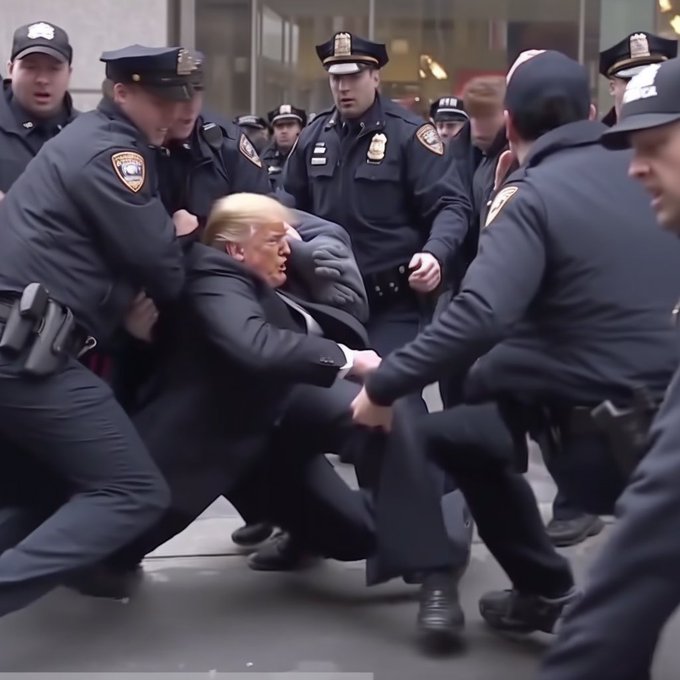He was surprised that this year they were, especially with an AI image, and he suspects it was helped by the prominence of an attractive young woman as the central figure.

Posted on 05/07/2023 7:29:15 AM PDT by texas booster
German artist Boris Eldagsen has sent shockwaves throughout the world of photography by entering the prestigious annual Sony World Photography Awards with an image that was not what it seemed. He submitted what the judges thought was an old-fashioned, sepia-toned, black-and-white photograph, of two women of different generations. The photo looked like it was taken in the early 20th century, and it won the creative category. ...
“My goal was to open a discussion, and I succeeded,” Eldagsen, a 52-year-old photographer from Berlin told EL PAÍS. Last fall, he considered testing the photo contests to see “if they had done their homework” and if they were aware that people could start submitting images generated using AI tools, he explains. The best way was to compete himself with one of his creations, entitled The Electrician, from the Pseudomnesia series. The term that means false memory, which might have given the judges a clue.
Eldagsen, a member of the German Academy of Photography, is satisfied with the result of his experiment. He believes there is an urgent need to address the fact that the realism of AI-generated images is such that it is becoming increasingly difficult to differentiate an original from an image created by algorithms. “It’s something we need to figure out as a community. AI is not photography and should not compete in the same category,” he says.
The dilemma Eldagsen wants to pose to his colleagues is whether it makes sense for the photography world to welcome AI-generated images under its umbrella or whether it would be wiser to exclude them. ... he says. “When I gave up the award everyone kind of froze. Like a rabbit looking at the fox, and the rabbit is the world of photography and the fox is AI-generators.”
(Excerpt) Read more at english.elpais.com ...
Those responsible for the award, the World Photography Organization — Sony only sponsors it — claim that Eldagsen had not made it clear to what extent artificial intelligence had played a role in his work, suggesting that they believed it might be a retouched photograph or that he was using it as a prop. For his part, Eldagsen is very upset that the organization tried to cover up the issue, he says, without entering into the debate that he considers urgent and unavoidable.
All mentions of the award that the German photographer won have disappeared from the organization’s website and it is no longer on display at London’s Somerset House. Eldagsen even went as far as to travel to the venue to take to the stage during the awards ceremony last week and explain what happened. He also released an open letter saying, “Thank you for selecting my image and making this a historic moment, because it is the first AI-generated image to win a prestigious international photography competition. How many of you knew or suspected that it was AI-generated? Something doesn’t feel right, does it?”
It’s a creepy looking picture
He was surprised that this year they were, especially with an AI image, and he suspects it was helped by the prominence of an attractive young woman as the central figure.

Yes it is.
I went looking for other photos that would seem proper for a Sunday posting on FR, and haven’t found many.
Typical Eurotrash.
The picture shows a curiosity about human relationships that’s often missing in human photography.
Which will one day lead to this fake photo (and that day is already in the past ...)

Its a rather fine picture really. If I’d taken that IRL I would be very proud of it.
El Pais is one of the top three Spanish daily newspapers. Its leftist in orientation, but I wouldnt call it hip. Or not more than usual. Call it the Spanish NYT, but with way less attitude.
The Spanish newspaper world is rather center-right in general. Think the NY Post crossed with the WSJ. Or, perhaps, more like the UK press.
You can thank all those folks that developed digital photography software, as far back as 2005. “photoshop” was one of many programs available, even with the photography magazines only touting “photoshop” in their articles. It was similar to the old MS Dos vs PC Dos combat.
I came from the ancient Tri-x, Pan-x, and ASA400 35mm film world.
When I moved to my present abode, I had lost all my equipment due to Katrina. I was at the mercy of part-time photo film processors, and yup, a great bunch of shots were ruined in the developing process.
I decided to “go digital”. It is not a Ricoh 401 with appropriate lenses, but neither a pinhole camera.
This person has created a discussion, all right!
“AI” enabled products are pieces of modern impressionist art, and not to be confused with photography.
Evocative. The younger woman definitely looks Germanic. The photo looks like it is from the WWII period.

About halfway down these is a discussion about his process to create the picture.
There were twenty stages in all in the creation of that image. Here are some of the key ones…

Step 1: Text-to-image: Creating the image with a text prompt, defining how I want the portrait of the two women to be, describing the expression and emotional quality, the art-historical period, and the photographic and technical specifications such as lens type, shutter speed, aperture, lighting, composition, and resolution.
Evocative.
I find it interesting that we judge these AI photos by our standards. We know that the AI has no "standards" or "soul" or other descriptive to discuss why we find one picture as better, or more soulful, as another.
When directed by a person, then AI can certainly create an evocative image for us to enjoy.
Now we as humans get to understand that the Creator is greater than the created.
Oh ok. Sure thing
Tell the story of the picture - it’s a Rorschach ...
Given that it was computer-created, I think it was pure coincidence that it was evocative.
As an aside, sketching is one of my hobbies. I have often been surprised when a sketch turns out surprisingly better than I intended. I have always chalked it up to coincidence.
The funny thing about art is that it takes two people at least. One to create it and the other to perceive it.
The human eye fills in the blanks with what it sees. It calls on memory to fill in the blanks.
Regarding the photo which is the subject of this thread, the AI system didn't know what it was creating, but our eyes and memories and powers of emotion/thought fill in the blanks. We see things that are meaningful to us even where they don't actually exist.
Does that make sense? It is hard to communicate such a point.

Always look at the hands. AI can’t generate hands for some reason - those fingernails don’t belong. They’re bizarrely shaped.
that’s not how i came to my decision. reread what i said.
photography has been a means of information, discoveries, exclamations of self, and especially in black an white format ( film), expressions in portraits that color cannot render properly.
Carry this to digital cameras. Now, it is more the norm to employ a DSLR, that at first glance, would be mistaken for a 35mm SLR body with those lenses.
After my Yashica and Rich cameras, lenses, filters and gear were ‘liberated’, I was not about to outlay thde cash for “a replacement kit”. So, I bit the Kodak line.
I still have it, and use it for online video creation.
That is not AI, and that bridge is for the next generation, not me.
Disclaimer: Opinions posted on Free Republic are those of the individual posters and do not necessarily represent the opinion of Free Republic or its management. All materials posted herein are protected by copyright law and the exemption for fair use of copyrighted works.